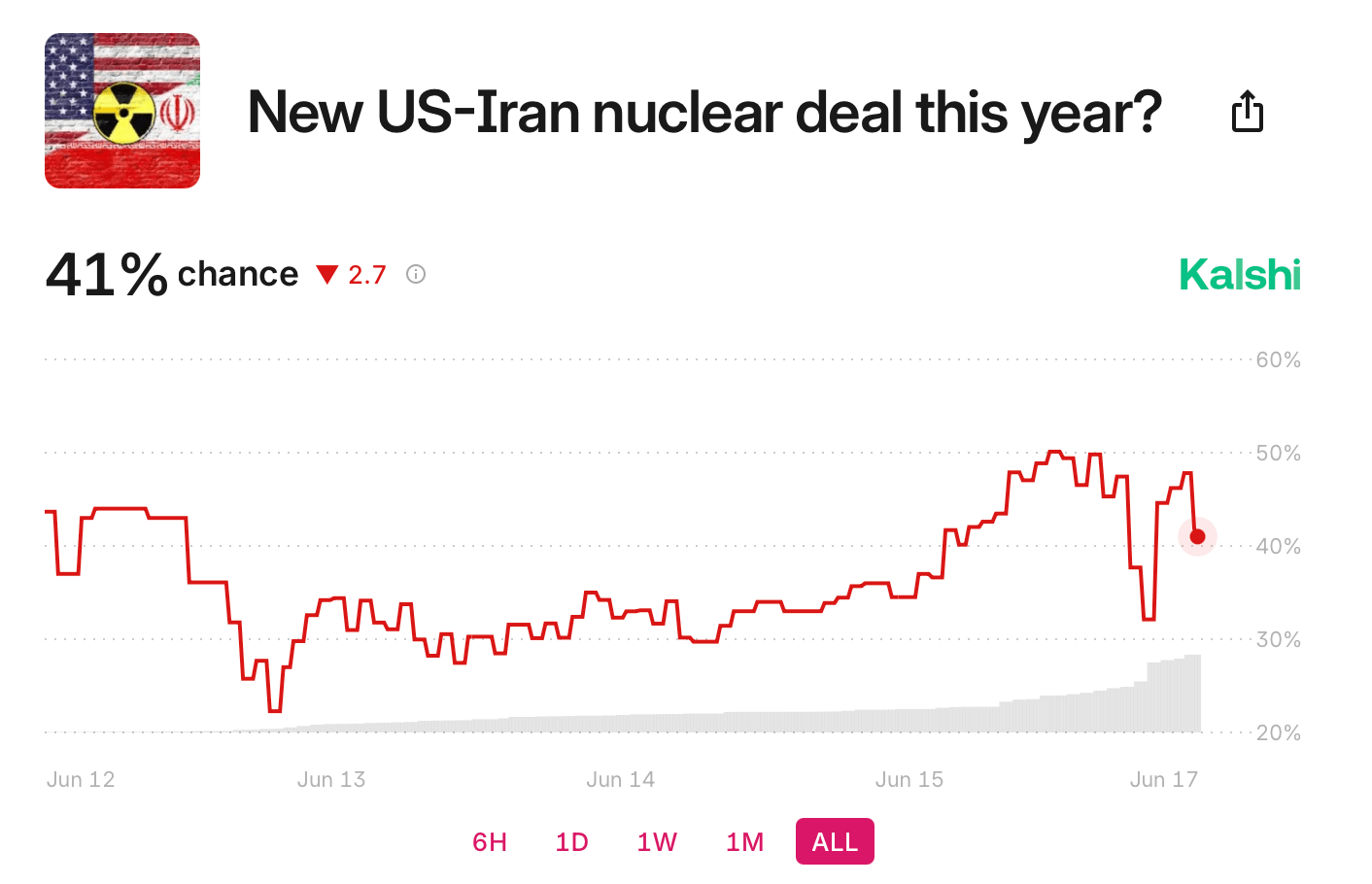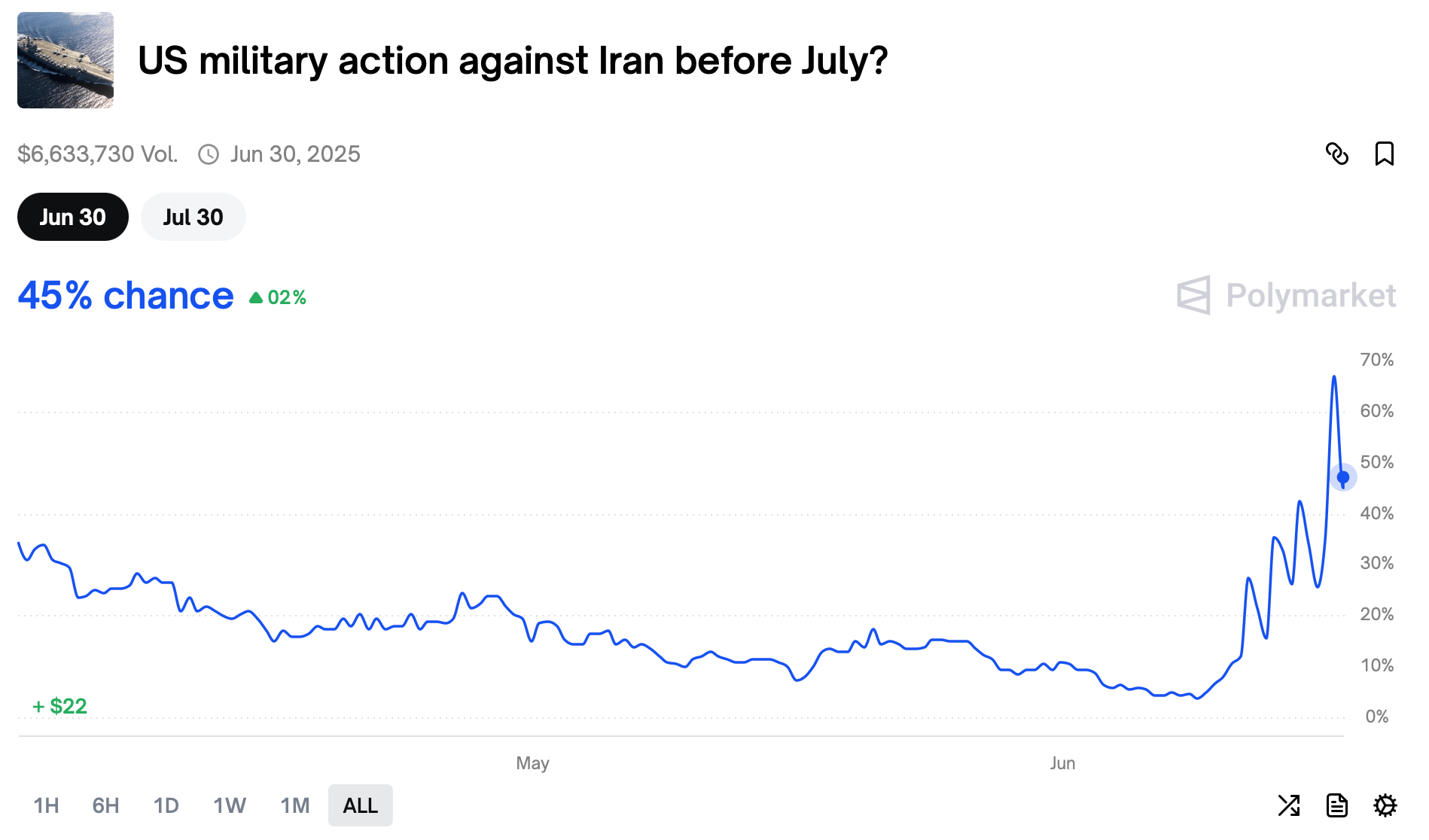Meanwhile, tension in the Middle East runs deep, and prediction markets are alive with speculation. On Kalshi, the U.S.-regulated exchange, a wager totaling $52,999 suggests a 41% likelihood of a U.S.–Iran nuclear agreement this year. That same market puts the odds at 42% for a U.S. delegation meeting Iranian officials before July.

Over on the blockchain-based Polymarket, bettors focus on whether the United States will use force against Iran before July. That wager has drawn $6.59 million in volume and sits at a 45% chance. Only yesterday, at 8 p.m. Eastern on June 16, those odds peaked at 66.9%.

Another Polymarket bet with $1.62 million in volume gives a 51% chance that the U.S. will secure a nuclear accord by year’s end. Its terms specify: “This market will resolve to ‘Yes’ if an official agreement over Iranian nuclear research and/or nuclear weapon development, defined as a publicly announced mutual agreement, is reached between the United States and Iran between Feb. 4 and Dec. 31, 2025.”
Reports indicate President Donald Trump left the G7 summit abruptly to address the crisis, urging an immediate evacuation of Tehran and hinting at a far more sweeping plan than just a cease-fire. Meanwhile, the Chinese embassy in Tel Aviv has advised Chinese citizens to depart Israel at once. Concern is mounting that this confrontation could intensify into a broader regional war, particularly if the United States becomes directly involved.
With diplomatic channels narrowing and markets pricing in geopolitical risk, the next few weeks may serve as a litmus test for American foreign policy under pressure. As military maneuvers collide with probabilistic wagers, the real stakes stretch far beyond percentages—into global stability, economic fallout, and the unpredictable consequences of political brinkmanship in a nuclear-tinged theater.
免责声明:本文章仅代表作者个人观点,不代表本平台的立场和观点。本文章仅供信息分享,不构成对任何人的任何投资建议。用户与作者之间的任何争议,与本平台无关。如网页中刊载的文章或图片涉及侵权,请提供相关的权利证明和身份证明发送邮件到support@aicoin.com,本平台相关工作人员将会进行核查。



